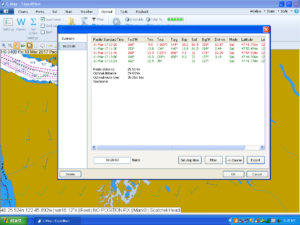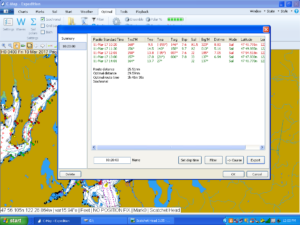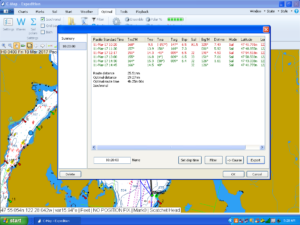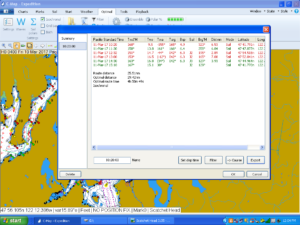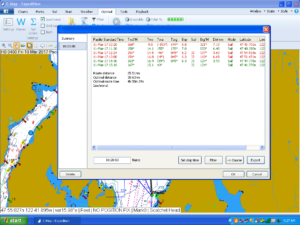Overall it appears that our cold winter is finally coming to an end. That’s the good news. It doesn’t, however, mean our wet winter is coming to an end. We are still just under five inches of rain ahead for the year and the way the 500MB picture is setting up, it doesn’t appear that this will be slowing down anytime soon.

The models for this weekend are coming together so nicely it’s almost scary. They almost never converge this closely at 24 hours out. Plus last night we had yet another example of how much fronts can shift as they approach the coast and how this can have a dramatic effect on the isobar orientation and the actual wind we get. The TV weather guys were warning of breeze to come in about 0100 hrs this morning with gusts to 50 mph. It actually showed up, at least in West Seattle, at around 2300 hours and the peak gusts were closer to 35 mph. In the overall scheme of forecasting, I would say that’s still fairly close. The front appeared to hit our coastal buffer zone and deflect up into Vancouver Island which had the effect of lessening the compression in the isobars and slightly reducing wind speed. We are now very much in a post-frontal situation which has the barometer rising rapidly, the wind coming around to the SW in the Sound staying at 20-25 knots and a very strong westerly coming down the Straits. This will ease as the day progresses.
Let’s look at the tidal currents for the race course first before we delve into the wind on the course. I use the currents at Foulweather Bluff from the Station ID PCT 1566 rather than 1611 as they are closer to time and direction at the Scatchet Head Buoy. The velocity of the current can vary quite a bit depending on how much water is coming down the Snohomish River and then flowing out of Possession Sound on the ebb. Not much rain, the current on the ebb will be about .5 to .75 the value at Foulweather Bluff. Lots of rain, like yesterday it will be closer to .75 to 1.0 the value.
Foulweather Bluff
0729 Max Ebb 1.12 knots
1130 Slack
1324 Max Flood .61 knots
1557 Slack
1929 Max Ebb 1.3 knots
West Point
0848 Max Ebb .21 knots
1012 Slack
1254 Max Flood .79 knots
1518 Slack
1724 Max Ebb .46 knots
With the amount of freshwater coming into the Sound you can expect the wind generated surface current to make the ebb start sooner, last longer and run at a slightly higher velocity.
As I mentioned above, when the models are this close this early, there is a tendency to develop a plan for how to sail the race and then not change the plan as actual conditions develop. This can get you into a lot of trouble especially in this race. It’s fine to develop the plan, just use all available data tomorrow morning before you go head out and then keep your head out of the boat to watch was actually happening with the weather.
Right now it very much looks like you’ll probably start on starboard and then immediately gybe to port to get west of the rhumb line and ride the slightly stronger ebb with slightly more wind to get north and then gybe to make a starboard approach to the mark. Remember that if you get up there in the ebb and the ebb is running at the mark, the current velocity at the mark can be much higher in the last ¼ mile setting you to the west, so put a bit in the bank to allow for the set. Also remember that if the barometer has started to fall and the wind is east of due south, hoist the jib in the starboard groove because you’ll be on a long port tack to get over to the west side of the Sound where the flood starts sooner and runs stronger all the way to Jefferson Head. Ideally, you won’t tack for the finish until you are confident you are laying the finish line. The reality is that as you come across the Sound on starboard tack, you’ll probably be headed as you get closer to Shilshole. If you end up below the finish line, hold starboard tack until you can lay the finish on port. Again, remember, that as you get closer to the Shilshole and the finish, the outfall from the Ship Canal will be stronger.
For a little fun this week, I ran projected times around the course based upon two different models (an idle mind is the devil’s playground) for Crossfire, a J-125, a J-109, a J-30 and a Cal 40 just because I have those polars. Remember, this is 24 hours out, I probably don’t have the correct sail inventories and these polars are probably not current.
Vessel Elapsed Time Miles Sailed
Crossfire 3h 01m 16s 29.00
J-125 3h 41m 38s 29.51
J-109 4h 25m 06s 29.27
J-30 4h 50m 49s 29.42
Cal 40 4h 50m 29s 30.63
It will still be fun to see what happens.
For Sunday it looks like a light southerly in the south Sound, a 15-20 southerly in the central Sound and later in the day 20+ of south easterly in the north Sound and in the east end of the Straits.
Be safe and have a great time.
Ed. Note: We’re going to start up an e-newsletter, so sign up, for just weather or the whole enchilada. Yeah, it’s free.
Bruce has raced and cruised the Pacific Northwest his entire life. He earned a Bachelor’s of Science from the University of Washington in Biological Oceanography and learned meteorology “to keep from getting kicked around on the race course.” Bruce spent nearly two decades as Associate Publisher for Northwest Yachting Magazine, retiring in mid-2015, and was the chairman of the board of trustees for the Northwest Marine Trade Association in 2014. (photo of Bruce driving Playstation is a bit dated, but cool)








